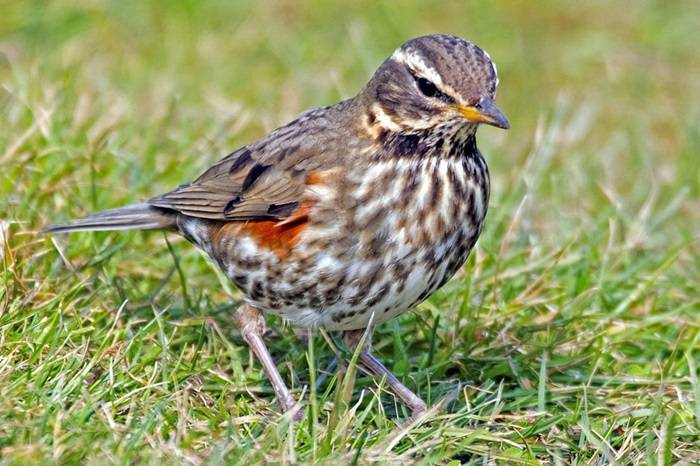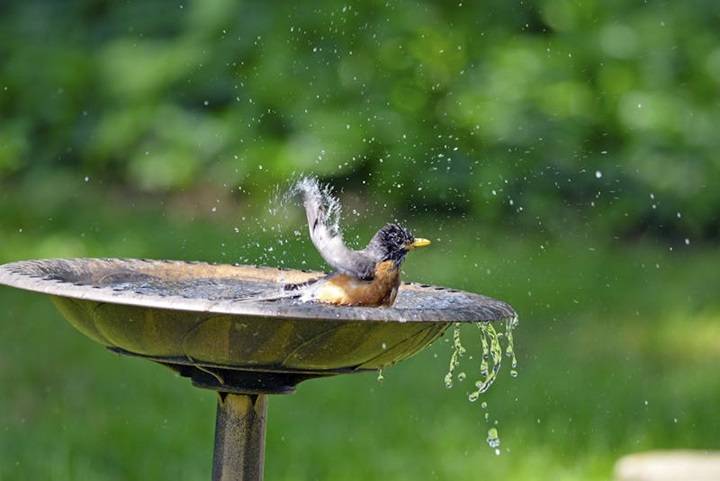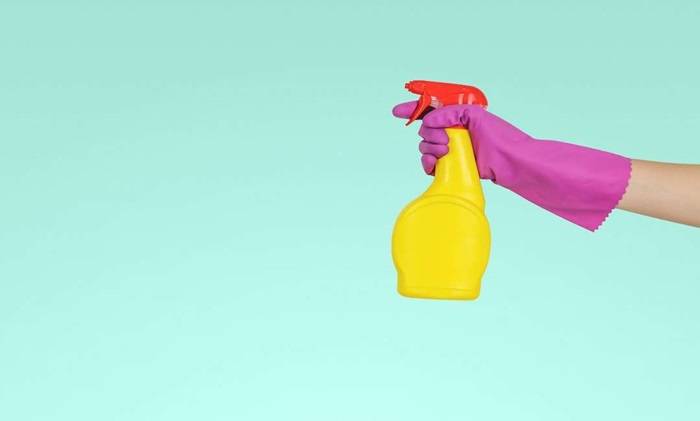Bird feeders are more than just a way to attract beautiful avian visitors to your backyard; they’re also a responsibility. Proper maintenance is essential not only for the health and well-being of the birds but also to ensure the longevity and effectiveness of your feeder. In this comprehensive guide, we’ll delve into the importance of keeping bird feeders clean and offer practical tips and techniques to help you maintain a clean and inviting feeding station for your feathered friends.
Why Cleanliness Matters
Maintaining a clean bird feeder is crucial for several reasons:
Bird Health
Keeping your bird feeder clean helps prevent the spread of diseases among bird populations. Dirty feeders can harbor bacteria, mold, and parasites that can make birds sick or even be fatal to them.
Attraction of Birds
Clean feeders are more attractive to birds. Birds are more likely to visit a feeder that is well-maintained and filled with fresh, clean food.
Feeder Longevity
Regular cleaning helps prevent damage to your feeder caused by mold, mildew, and other contaminants. A clean feeder will last longer and provide many seasons of enjoyment for both you and the birds.
Tools and Supplies

Before you start cleaning your bird feeder, gather the necessary tools and supplies:
- Gloves: Protect your hands from dirt, debris, and potentially harmful bacteria.
- Bucket: Use a bucket to hold soapy water for cleaning.
- Brushes: Have a variety of brushes on hand, including small brushes for crevices and larger brushes for scrubbing.
- Mild Detergent: Use a mild dish detergent or bird feeder cleaner to remove dirt and grime.
- Bleach Solution: A diluted bleach solution (one part bleach to nine parts water) can be used to disinfect feeders if necessary.
- Rags or Paper Towels: Use these to wipe down surfaces and dry the feeder after cleaning.
Step-by-Step Cleaning Process
Follow these steps to thoroughly clean your bird feeder:
Empty the Feeder
Start by emptying the feeder of all remaining seeds and debris. Discard any spoiled or moldy seeds.
Disassemble the Feeder
If your feeder has multiple parts, such as trays, perches, and lids, disassemble it completely to ensure thorough cleaning.
Soak in Soapy Water
Fill a bucket with warm water and add a small amount of mild detergent. Place the feeder parts in the soapy water and let them soak for 10-15 minutes to loosen dirt and grime.
Scrub Thoroughly
Using a brush, scrub all surfaces of the feeder, including crevices and hard-to-reach areas. Pay special attention to areas where food residue may accumulate.
Rinse
Rinse the feeder thoroughly with clean water to remove any soap residue.
Disinfect (if necessary)
If you suspect your feeder may be contaminated with bacteria or mold, disinfect it using a diluted bleach solution. Allow the feeder to soak in the bleach solution for a few minutes, then rinse thoroughly with clean water.
Air Dry
Allow the feeder to air dry completely before reassembling and refilling it with fresh bird seed.
Regular Maintenance Tips
To keep your bird feeder clean and in good condition, follow these maintenance tips:
Clean Regularly
Make cleaning your bird feeder a regular part of your routine. Aim to clean it at least once every two weeks, or more often if it becomes visibly dirty.
Monitor Seed Levels
Keep an eye on the seed levels in your feeder and refill it regularly. Avoid overfilling the feeder to minimize waste and prevent seeds from becoming moldy.
Rotate Feeder Locations
Move your feeder to different locations in your yard periodically to prevent the buildup of waste and debris in one spot.
Use Squirrel Guards
Install squirrel guards or baffles to prevent squirrels and other pests from accessing your feeder. This will help keep the feeder cleaner and reduce the risk of contamination.
Inspect for Damage
Regularly inspect your feeder for signs of damage, such as cracks, holes, or loose parts. Repair or replace any damaged components to ensure the feeder remains in good condition.
By following these simple tips and techniques, you can maintain a clean and inviting bird feeder that will attract a wide variety of birds to your backyard. Remember, keeping your feeder clean is not only beneficial for the health of the birds but also ensures your own enjoyment of watching them thrive in their natural habitat. So, roll up your sleeves, grab your cleaning supplies, and get ready to welcome your feathered friends to a clean and hygienic feeding station!
Troubleshooting Common Issues
Even with regular cleaning and maintenance, you may encounter some common issues with your bird feeder. Here are some troubleshooting tips:
Mold and Mildew
Mold and mildew can develop on bird feeders, especially in humid or damp conditions. To prevent mold growth, ensure your feeder is thoroughly dry before refilling it with seed. You can also try moving the feeder to a more shaded area to reduce moisture buildup.
Clogging
Sometimes, bird feeders can become clogged, preventing seeds from flowing freely. If you notice clogging, disassemble the feeder and clean out any obstructions. You may also need to adjust the feeder’s settings to allow for better seed flow.
Pest Infestation
In addition to birds, feeders can attract unwanted pests such as squirrels, raccoons, and insects. To deter pests, use squirrel guards or baffles and consider placing your feeder on a pole with a predator guard. You can also try using seed blends that are less attractive to pests.
Seed Spoilage
Spoiled or moldy seeds can pose a health risk to birds. To prevent seed spoilage, store your bird seed in a cool, dry place in a tightly sealed container. Only fill your feeder with as much seed as birds will consume in a few days to minimize waste and reduce the risk of spoilage.
Feeder Damage
Over time, bird feeders can become damaged due to exposure to the elements or wildlife. Regularly inspect your feeder for signs of damage, such as cracks, holes, or loose parts. Repair or replace damaged components to ensure the feeder remains functional and safe for birds.
Advanced Cleaning Techniques
For stubborn stains or hard-to-remove grime, you may need to use more advanced cleaning techniques:
Vinegar Solution
Vinegar is a natural disinfectant that can help remove tough stains and odors from bird feeders. Mix equal parts vinegar and water and use this solution to soak the feeder parts before scrubbing them clean.
Pressure Washing
If your feeder is particularly dirty or large, you may want to consider using a pressure washer to clean it. Be sure to use a low-pressure setting to avoid damaging delicate feeder components.
Bleach Soak
For heavily contaminated feeders, a bleach soak can help disinfect and sanitize the feeder. Mix one part bleach to nine parts water and soak the feeder parts for 15-20 minutes before rinsing thoroughly with clean water.
Safety Considerations
When cleaning bird feeders, it’s essential to prioritize safety:
- Always wear gloves to protect your hands from dirt, debris, and potentially harmful bacteria.
- Avoid inhaling dust or mold spores from dirty feeders. Consider wearing a mask if necessary.
- Use caution when handling bleach or other cleaning chemicals and follow all safety precautions and manufacturer recommendations.
How To Clean Bird Feeders
Related Post:
Unlocking the Egg-Laying Mystery: When Do Ducks Start Laying Eggs?
Choosing the Perfect Pet Duck: A Comprehensive Guide
Exploring the Enigmatic Ancona Duck: A Quirky, Beautiful, and Versatile Breed
Maintaining a clean bird feeder is essential for the health and well-being of both the birds and the feeder itself. By following the tips and techniques outlined in this guide, you can create a clean and inviting feeding station that will attract a wide variety of bird species to your backyard. Remember to clean your feeder regularly, troubleshoot common issues as they arise, and prioritize safety at all times. With a little effort and attention to detail, you can enjoy the beauty and wonder of backyard birdwatching for years to come.



